Desktop Window Manager (DWM) manages everything you see on a computer screen, whether it’s a Windows, Mac, or Linux device. So it’s natural to use some processing power to run DWM.
However, If your CPU usage suddenly jumps to 50%+ for DWM, your PC has some problems. It can slow your CPU performance, hangs your Windows, and creates other software issues.
But don’t worry. In this article, I’ll provide you with the most effective solutions to reduce DWM’s CPU usage and optimize your PC.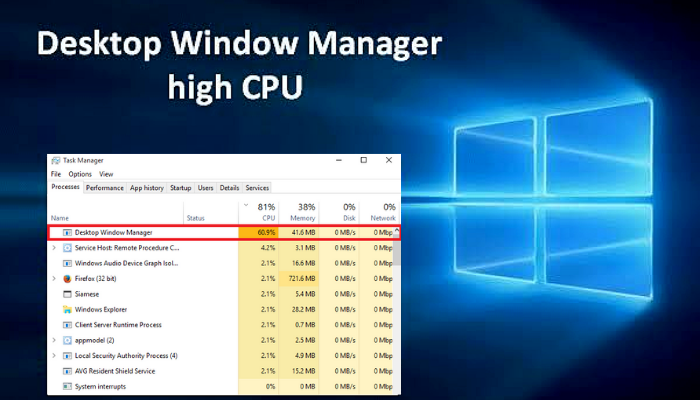
So without further ado, let’s jump in.
How to Fix Desktop Window Manager Max CPU Usage
To fix Windows Manager’s High CPU Usage you need to modify your desktop wallpaper or theme, deactivate the screen saver, adjust for best performance, run performance Diagnosis, deactivate hardware acceleration, and update GPU drivers and your windows.
Also, You must perform a clean boot when that doesn’t solve your issue.
This portion will give you a step-by-step guide for all the fixes. It will help you to apply the solution easily.
Here are the fixes for the Desktop Window Manager High CPU usage problem:
1. Change Desktop Wallpaper/Theme
Window Manager manages your desktop’s visual effects, like wallpaper and theme. If your current wallpaper/theme uses too many assets, change it.
Follow the steps to change your Wallpaper or Theme:
- Press the Win key on your keyboard and click Settings on the left.
- Choose Personalization from the pop-up window.
- Change the Background picture, Colors, Lock screen background, and Themes.
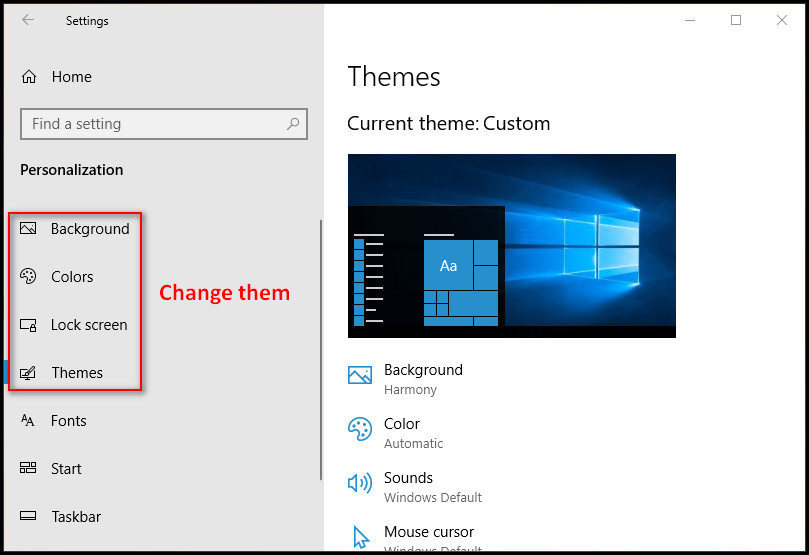
Now open the Task Manager and check the CPU usage. Did that go down? If not, follow the next steps.
2. Deactivate Screen Saver
The Screen savers of your PC consume CPU clock speed and your RAM. So you should disable it if DWM increases your CPU load.
To deactivate the screen saver, follow the steps below:
- Press the Win + S key from your keyboard and open Windows Search.
- Input lock screen settings in the box and hit Enter.
- Click Screen saver settings from the search result.
- Choose None from the drop-down list and the OK button.
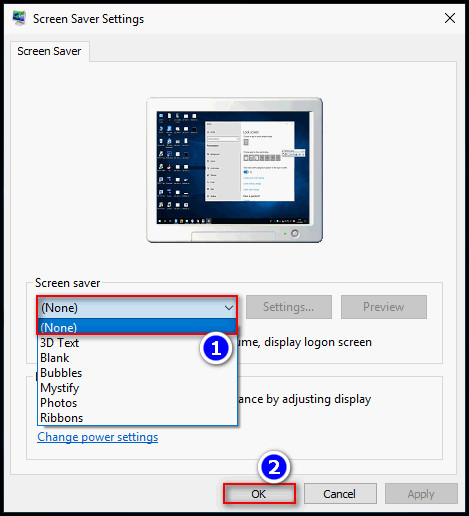
After completing the steps, the CPU usage of Desktop Window Manager will drop.
Sometimes System Idle Process can cause high CPU usage. We have outlined some key reasons why this can happen. Do check it out.
3. Run Performance Diagnosis
Performance Diagnosis will show whether your CPU is ok, or has a problem. When there’s a concern, the tool will repair the file. It will also help with Desktop Window Manager.
Use the steps to run performance diagnosis on your PC:
- Press Win + S key and type cmd in the box.
- Right-click on the Command Prompt and choose the Run as administrator option.
- Insert msdt.exe /id PerformanceDiagnostic and press Enter from your keyboard.
- Click Next in the Performance window.
- Wait for the process to finish.
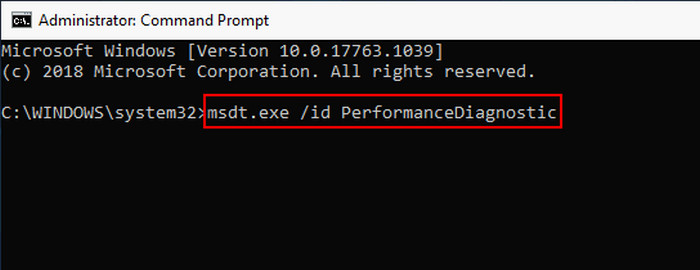
After completing the process, your CPU usage will go down.
4. Adjust Windows to Better Performance
Setting your PC in the performance mode will disable unnecessary graphical interfaces. So you should switch your Windows to the better performance when you face high CPU issues.
Follow the process to Adjust Windows for better performance:
- Double-click on the Control Panel from your desktop and choose System and Security.
- Input performance in the search box.
- Click on the Adjust the appearance and performance option under the System menu.
- Mark Adjust for best performance in the Performance Options tab.
- Click OK to confirm.
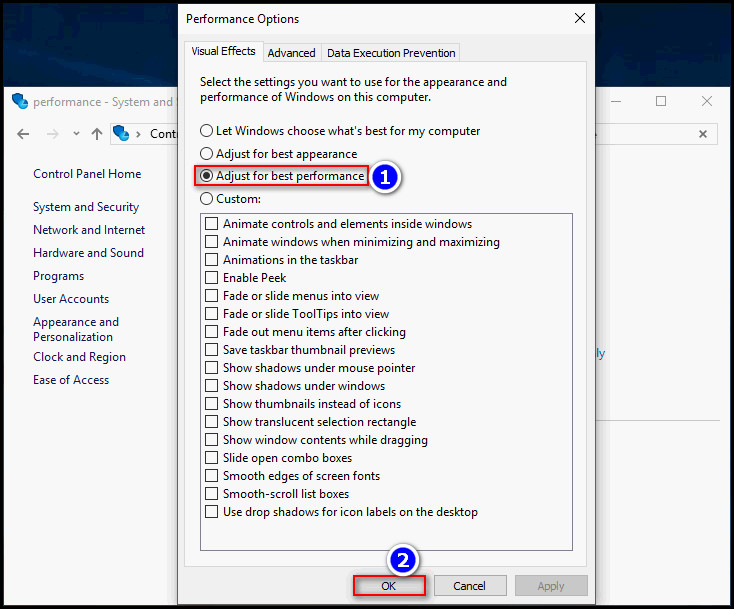
After completing the steps, your CPU use will become lower.
Are you facing high CPU usage from Windows Driver Foundation? Check out our article where we resolve this issue.
5. Use Bat Script
You can also use the bat script to lower your CPU usage. Just write the code in notepad and save the file as Bat.
Here are the steps to use bat script to lower your CPU usage:
- Click on the Windows search icon and type notepad.
Copy-Paste the scripts as follows:- C:
wpr -start Handle
sleep 5
wpr -stop Handle.
- C:
- Go to Files and select Save as.
- Rename the file as anything.bat and click Save.
- Double-Click the script from the saved location.
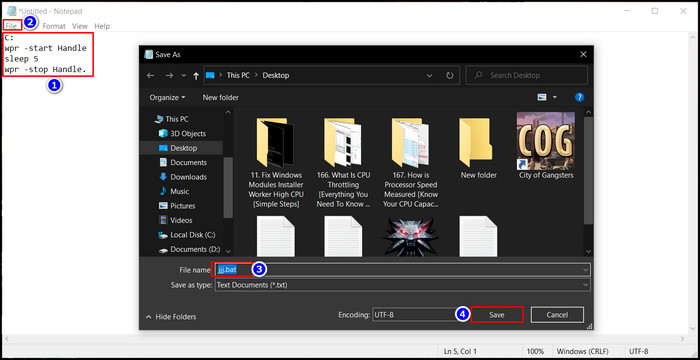
After running the scripts, your CPU usage will become lower
6. Turn Off Hardware Acceleration
Hardware Acceleration on Office Products requires many graphical interfaces and scripts. To run those scripts, Desktop Window Manager needs more CPU power than usual. So disabling or lowering the Performance will reduce the CPU uses.
Follow the steps to turn off hardware acceleration:
- Tap Win + R and open the Run application.
- Write regedit in the box and press Enter.
- Navigate to Computer\HKEY_CURRENT_USER\Software\Microsoft\Avalon.Graphics.
- Right-click on the empty space in the right.
- Select New and create DWORD (64-bit) Value or DWORD (32-bit) Value. (According to your windows bit).
- Rename the fresh value to DisableHWAcceleration.
- Dual-click on DisableHWAcceleration and set the Value to 1.
- Tap the OK option and close Registry Editor.
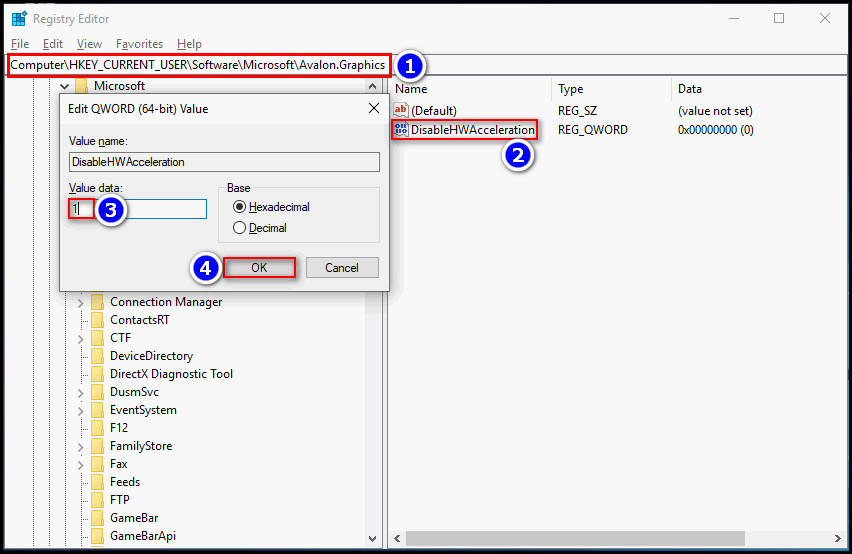
After completing the steps, you should restart your PC to see the changes.
If the system interrupt process consumes more CPU than you want, this could be a problem. Read our separate piece, where we discuss the possible causes and fixes you can try.
7. Update Display Drivers:
Outdated display drivers put extra pressure on your CPU. That’s why you should update your GPU driver from time to time.
To update your display driver, follow the steps:
- Right-click This PC and select Manage.
- Go to Device Manager > Display adapters.
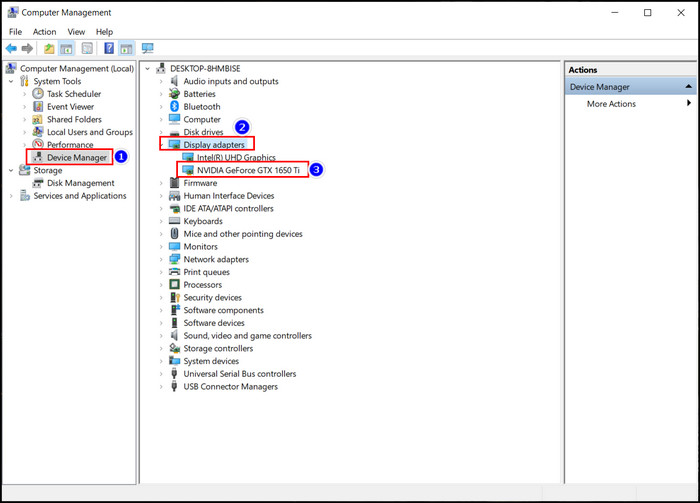
- Right-click all drivers periodically and select Update Driver for each.
After completing the update, the CPU pressure will go down.
8. Remove 3rd-Party Wallpaper Applications
Applications like Bing Wallpaper require high CPU GHz. If you install these applications on your PC, Desktop Window Manager will use most of your CPU’s processing speed.
Follow the steps to remove 3rd-party wallpaper applications from your PC:
- Press Win + S key to open Windows Search.
- Write Control Panel in the box and click it from the search result.
- Choose Uninstall a program.
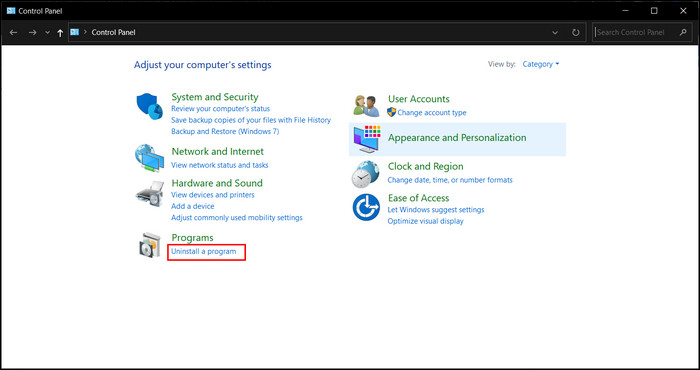
- Select your 3rd party Wallpaper software and tap Uninstall.
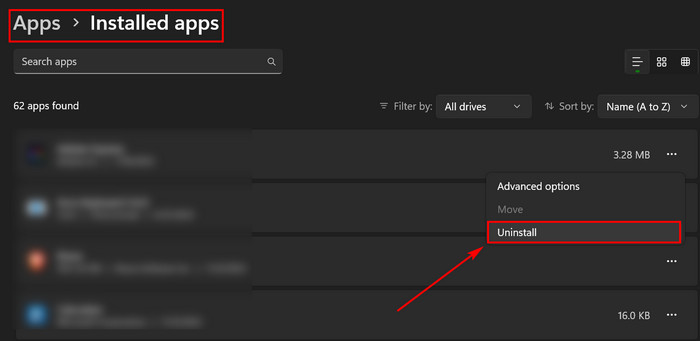
After completing the steps, your CPU usage will go down drastically.
Spooler Subsystem can cause high CPU usage sometimes. This can slow down your PC when doing simple tasks. Read our article where we fixed this issue.
9. Update Windows
If you still face a high CPU problem after applying all the above solutions, you should update your Windows. Use the following steps to update your Windows without any issues.
Here are the steps to update your Windows:
- Press Windows + I key to open Settings.
- Select the Update & Security option.
- Choose Check for Updates.
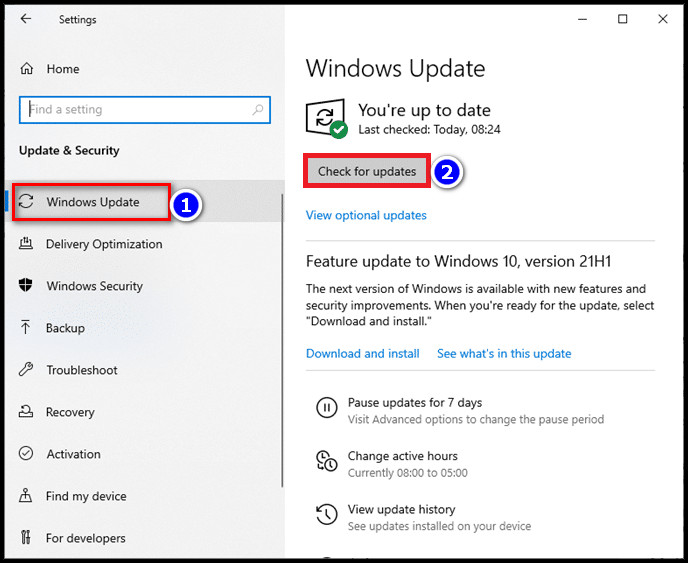
- Select Install Now to install the updates.
After updating your Windows version, the CPU uses will drop to normal.
Why Does Dwm.exe Cause High CPU Usage?
Desktop Window Manager (dwm.exe) manages your PC’s visual effects, like transparency and animations. It creates a composite view of your windows screen and renders using graphics hardware acceleration. That’s why it needs CPU power.
However, you have a problem if the app uses more than 50% of your processing power. Check your CPU usage using powershell to be sure.
There are several reasons why DWM can cause high CPU usage. You will find them in the following section.
These are the reason behind Dwm.exe’s High CPU Usage issue:
- Outdated Graphics Drivers: If your graphics drivers are outdated or corrupted, it can affect DWM’s rendering. That leads to high CPU usage.
- Compatibility Issues: Some hardware or software applications can’t synchronize with DWM. It creates conflicts between scripts and increases CPU usage.
- Visual Effects Settings: When you enable too many visual effects or transparency, DWM consumes more CPU resources.
- Virus: Malware infections can exploit system processes like DWM and increases CPU load.
- Hardware Issues: Faulty GPU makes DWM consume more CPU resources than usual.
- CPU load: You are running too many processes on your system. That’s why DWM needs more CPU power for visual effects.
You must identify the root cause to fix DWM’s high CPU usage. After that, you can apply the required solutions accordingly.
Updating graphics drivers, disabling unnecessary visual effects, running antivirus scans, and checking for hardware issues can help you reduce DWM’s CPU usage and optimize your PC’s performance.
FAQs
Is it safe to disable Desktop Window Manager?
No, disabling the DWM isn’t safe for your PC. Because if you disable Desktop Window Manager, you can’t access any Windows themes.
Why does the Desktop Window Manager need so much power?
Desktop Window Manager (DWM) manages visual effects like transparency, 3D windows, and more on your desktop. That’s why it requires so much CPU power.
What will happen if you end Desktop Window Manager?
If you disable the Dwm.exe process, you can’t access any Windows themes. Additionally, your windows will switch back to the classic look.
Conclusion
In short, DWM’s high CPU usage can be a frustrating prime that impacts your PC’s performance. Fortunately, there are several easy and effective solutions to fix this issue. You can quickly fix this issue by updating graphics drivers, disabling unnecessary visual effects, reducing transparency, running antivirus scans, etc.
After applying the solutions, I’m sure you’ve optimized your PC’s performance. Comment if you face any problems while applying the solutions. Peace!




